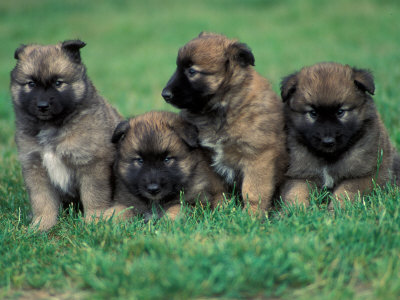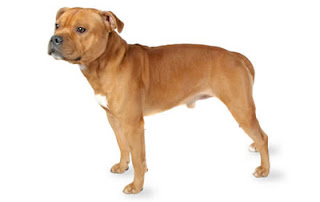Rat Terrier Puppies Pictures
With teaching, socialization, and a certain forgiveness of their "bad" customs, the smart Rat Terrier can be an invaluable member of your family. Thanks to the efforts of breeders and fanciers alike, the Rat Terrier endured his time as a lesser-known type and is growing in popularity again.
He makes an very good watchdog and is the supreme farm dog; his strong jaws and quick movements were invaluable to farmers in eradicating rats and other little vermin from ranches. He is often wrong for a smooth-coated Fox Terrier or a Jack Russell, but proprietors and breeders alike understand of all the wonderful traits that make the Rat Terrier exclusive.
As you'd expect, Rat Terriers exhibit all the behaviors--and stubbornness--of a usual terrier. For demonstration, they cut into. cutting into is an inherent trait in Rat Terriers and they will spend a great deal of time digging in your backbackyard and flower bed in an pressing quest to come to ceramic by nightfall. Don't despair. Give him one locality in the yard to cut into up to his heart's content and he'll be fine. He just has to learn what area is his, and he's intelligent sufficient to do so.
Be aware: this Houdini Hound has the understanding and drive to number out how the key to freedom. It's best to be with him in the yard rather than letting him relish it at his solitary leisure. He should wear a collar and tag at all times, as well as be microchipped, because if he begins running you'll not ever catch up. He may be little, but he's very quick. He can jump high too, so a 5- or 6-foot fence is a good concept.
The shrill "yipping" of a Rat Terrier is discernible from that of other dogs. If you reside in an luxury suite or a district that has disturbance rules, take his instinct to bark into account while doing your research. furthermore remember that were bred to be fast runners and need the space and time to workout that drive.
When training a Rat Terrier, take into account that whereas they are highly smart, they can furthermore give new meaning to the phrase "stubborn." Many different teaching methods are utilised with Rats; don't give up if one procedure doesn't work--just try another. They need people who are firm and experienced, else Rats will swarm all over their proprietors.
Fun fact: Rat Terriers puppies are born with their ears up. About the time their eyes start to open, the ears start to drop. Some of those ears may stay fallen, some may burst back up in a few weeks or months.
The Rat Terrier is an American type that is the outcome of employed with the Fox Terrier, Bull Terrier, Manchester Terrier, and vintage English White Terrier, to title a couple of.
Being a ranch dog and hunter, the need for the Rat Terrier to apprehend prey and pests motored breeders to start supplementing new strains to the type in the 1910s and 1920s. A Rat Terrier appeared beside Shirley Temple in the 1930s movie, "The Little Colonel."
In the Midwest, the Rat Terrier was bred to Whippets and Italian Greyhounds to make a more versatile and quick-footed dog who could help command the jackrabbit difficulty. The new and advanced Rat Terrier was adept to hold up with the fast-moving rodent and proceeded to verify his worth.
In the Southern and centered American districts, the Rat Terrier was bred to the Beagle to conceive a more pack-oriented dog. This is where the Rat Terrier acquired his powerful sense of stink; his speed came from the Whippet.
In the 1920s, Toy Fox Terriers that were too large-scale for their own breeding program were presented into the Rat Terrier's breeding program. With this newest damage, Rat Terriers began making their own toy-sized offspring.
leader Theodore Roosevelt is said to have named the breed but not every person acquiesces. He called his own dog, who had explained the White dwelling rat problem, a Rat Terrier. There is argument on if the dog that leader Roosevelt owned was in detail the same Rat Terrier as appears today. The short-legged dog that Roosevelt had has become the acknowledged breed benchmark for the Terrier entitled after him, and the Teddy Roosevelt Terrier is furthermore renowned as the short-legged Rat Terrier.
The Rat Terrier was a common view on farms between the 1910s and 1940s but finally begun to decline after ranchers started using poison to control rodent populations. By the 1950s, the breed was no longer prevalent. A handful of typeers maintained the type until a re-emergence in the late 1970s.
The Decker Rat Terrier is a damage of the type that is gaining popularity. It first began with a dog belongs to by avid hunter Milton Decker, who sensed his own dog, Henry, owned terrific qualities that he wanted to maintain in his breeding program.
He did well in making a large Rat Terrier with a fixed ear set--a searching dog who would even get from water. The Deckers were utilised for searching untamed pig, deer, cougar and accept as well as in the more traditional Rat Terrier roles. Even though the Decker Rat Terrier is considered feisty and strong, he maintains all the traits of a wonderful companion.
In 1972, the first hairless Rat Terrier was born and from that little hairless female a new damage of Rat Terrier was evolved. The hairless Rat Terrier is now known as the American Hairless Terrier. The American Hairless Terrier arrives in two sizes, miniature and benchmark.
The AKC does not identify the Rat Terrier breed--although the UKC does--but type associations have characterised the sizes.
The Rat Terrier is a little and sturdy dog and should be between 13 to 16 inches in size. The UKC doesn't have a particular heaviness for benchmark Rat Terriers as each one-by-one dog has a different heaviness for their size.
The Decker Rat Terrier is somewhat larger than the Rat Terrier and should variety between 22 to 40 pounds. A male should be 16 to 19 inches in size while a female should be 16 to 17 inches.
The miniature Rat Terrier should weigh 10 to 18 pounds and should not be larger than 15 inches in size.
The plaything Rat Terrier is an even lesser type of the type. His heaviness should range between 5 to 10 pounds and he should be no bigger than 12 inches in height.
smart, wary, and obstinate, this type is a dynamo. realise their general disapprove of strangers and understand that most moderately hot up to tourists (although chances of that occurrence are slimmer if you're not there). If they're not correctly socialized they will be fine with their family but they could become hard-hitting to strangers and other animals. They are also absolutely fearless, which can be a magnificent trait, though not if they are aggressive.
A good family favourite, Rat Terriers are amazingly perceptive and intuitively respond to your moods. They have a large desire to please, love applaud, and will pursue you round the dwelling. propagated to work all day on the ranch, these friends need a allotment of workout and if they don't get it, their pointed little minds can turn devious to amuse themselves. Their persons live with the mantra that a tired dog is a good dog.
As with every dog, the Rat Terrier needs early socialization--exposure to numerous distinct persons, views, noise, and experiences--when they're juvenile. Socialization assists double-check that your Rat Terrier puppy augments up to be a well-rounded dog.
registering him in a puppy kindergarten class is a large start. Inviting visitors over frequently, and taking him to engaged reserves, shops that allow canines, and on leisurely strolls to rendezvous neighbors will also help him polish his social abilities.
Rat Terriers are usually healthy, but like all breeds, they're prone to certain wellbeing conditions. Not all Rat Terriers will get any or all of these diseases, but it's significant to be cognizant of them if you're contemplating this type.
If you're buying a puppy, find a good breeder who will display you wellbeing clearances for both your puppy's parents. wellbeing clearances prove that a dog has been checked for and unblocked of a particular condition.
In Rat Terriers, you should anticipate to glimpse wellbeing clearances from the Orthopedic base for Animals (OFA) for hip dysplasia (with a tally of fair or better), elbow dysplasia, hypothyroidism, and von Willebrand's infection; from Auburn University for thrombopathia; and from the Canine Eye Registry base (CERF) certifying that eyes are normal. You can confirm wellbeing clearances by ascertaining the OFA web location (offa.org).
Allergies: Allergies are a widespread ailment in dogs, and the Rat Terrier is no exclusion. There are three major types of allergies: food allergies, which are treated by eradicating certain nourishment from the dog's diet; contact allergies, which are initiated by a answer to a topical matter such as bedding, flea powders, dog shampoos, and other chemicals; and inhalant allergies, which are initiated by airborne allergens such as pollen, dirt, and mildew. remedy varies according to the cause and may include dietary restrictions, medications, and ecological changes.
Incorrect Bites: Malocclusion, or incorrect gnaw, is a somewhat deformed jaw structure that departs the jaw misaligned. There are three distinct types of incorrect bites, all of which are glimpsed in Rat Terriers. An overshot gnaw is initiated when the top jaw is expanded past the smaller jaw; this determinants difficulties in grasping and in more severe cases; the lower teeth can bite into the roof of the mouth. An undershot bite is when the lower jaw expands out past the upper jaw; whereas it is benchmark in some types, it can origin adversities in the Rat Terrier and may need to be amended with surgery. The last kind is wry mouth, which is a rotating of the mouth initiated by one edge growing faster then the other; it determinants adversities with consuming and grasping. In some situations, each type of incorrect bites can self-correct while the puppy is still growing. If the incorrect gnaw has not self-corrected by the time the puppy is 10 months of age, it is not likely to. If surgery is needed, delay until the puppy has finished growing. Corrective surgeries can encompass tooth extraction, crown height reductions or the use of spacers.
Patellar Luxation: furthermore known as fell stifles, this is a widespread difficulty in small dogs. The patella is the kneecap. Luxation means dislocation of an anatomical part (as a bone at a joint). Patellar luxation is when the knee junction (often of a hind leg) downhill rides in and out of location, initating agony. This can be crippling, whereas numerous canines lead somewhat usual inhabits with this status.
Demodectic Mange: occasionally called demodicosis, this status is caused by the demodex mite, which a mother dog passes to her pups in their first few days of life. (The mite can't be passed to humans or to other dogs; only by mother to pups.) Demodex mites reside in hair follicles and usually don't origin difficulties, but if your Rat Terrier has a weakened or compromised immune scheme, he can evolve demodectic mange. In its localized form, patches of red, scaly, balding skin emerge on the head, neck and forelegs. It often clears up on its own, but even so, you should take your dog to the vet to prevent it from turning into the generalized pattern of demodectic mange, which wrappings the entire body and determinants infection.





















